PROVINCETOWN — Stormy Mayo is kneeling in the withered remains of his dahlia garden, his hands tugging at something hidden beneath the decay. Beside him, Laura Ludwig throws down flattened cardboard boxes over the muddy black soil.
“It’s like lasagna gardening,” Ludwig says, referring to the no-till layered composting method, as she dumps a shovelful of dirt over a cardboard box. “I’m trying to keep the weeds back,” she says. “But I’m not sure it’s going to work, because a lot of what I’m putting on there has a lot of seeds in it. We’ll see.” Cardboard blocks weeds and adds carbon to the soil, she says. Come spring, she’ll add a fresh layer of manure.
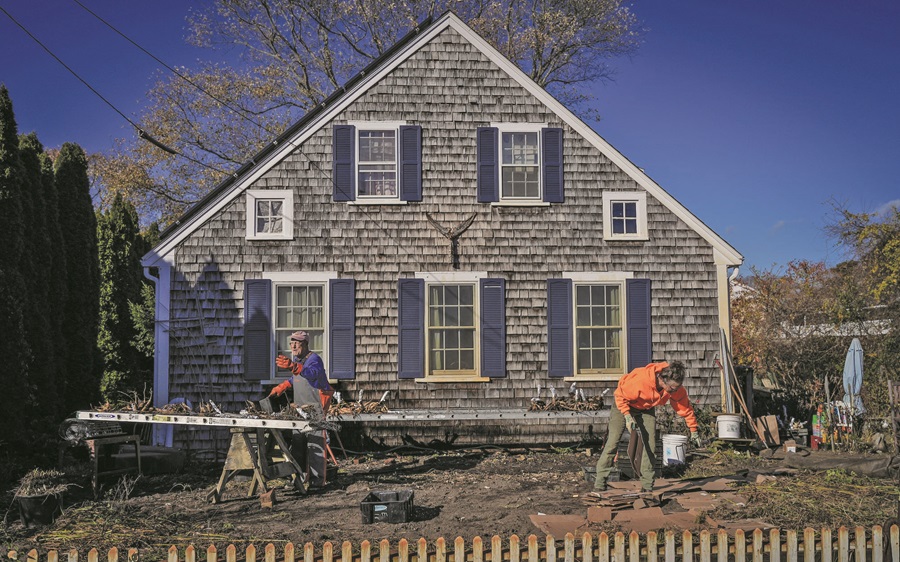
In the background, “Hotel California” plays from an old radio, defying the strange quiet of the emerging off-season. With a determined yank, Mayo unearths a hand-like clump of tubers. He pauses to wipe the sweat from his brow with the back of his hand, then reaches for a nearby hose to rinse off the earth-clad, potato-like organs. There is some urgency to their rhythm at this time of year. “If the tubers freeze, they’re dead,” says Mayo.
The tuber is the dahlia’s starchy underground root, used for nutrient storage and reproduction. Every autumn, Mayo and Ludwig spend their weekends in the dirt extracting, dividing, cleaning, labeling, and storing some 2,000 viable specimens from 650 clumps in their gardens, which may hold as many as 20,000 tubers in all. Every spring, they replant the tubers, which grow into dahlia plants, each one yielding as many as 100 flowers during the season.
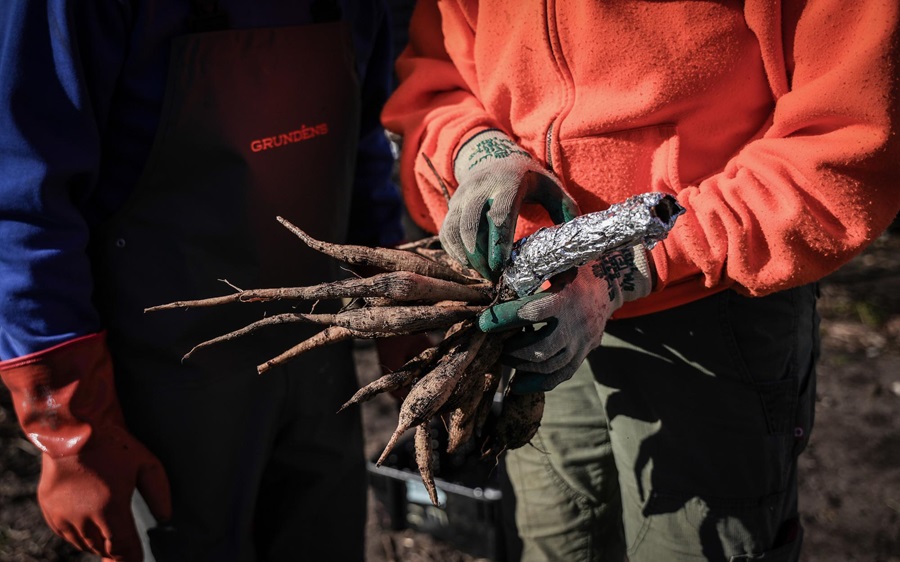
The Ludwig-Mayo Dahlia Garden, as it’s known by many locals, facing Bradford Street in Provincetown’s East End, is one of 12 different dahlia plots the couple tend. It looks remarkably different right now than it does in the summer. By late June, the dirt is obscured by a thick patch of foliage, and from midsummer until late September the flowers create a mesmerizing, almost psychedelic jumble of color, drawing oohs and aahs from locals and tourists.
Years ago, when people started noticing the dahlia profusion, the Provincetown police asked that Mayo put out a “please keep moving” sign to ensure the smooth flow of traffic along Bradford Street. They’ve since given up on the sign, figuring it caused more slowdowns than it prevented.
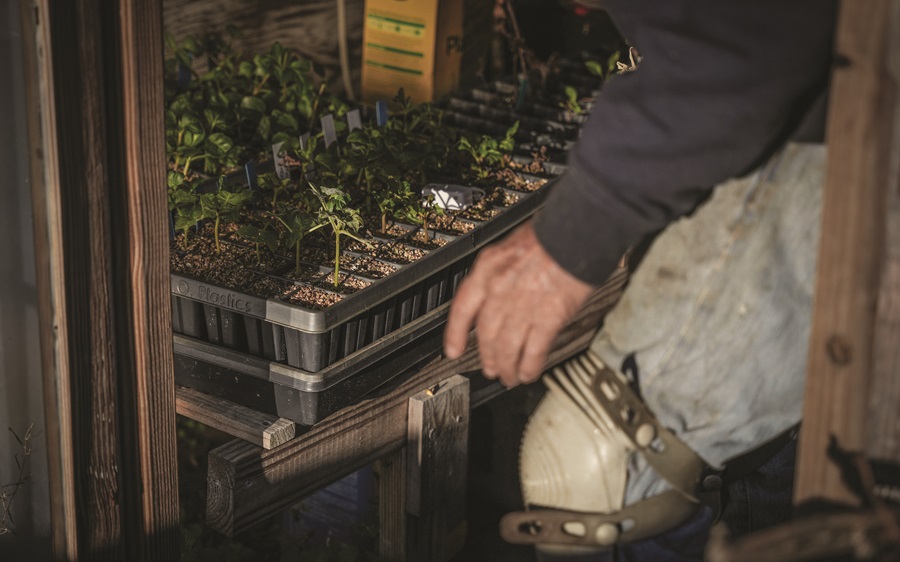
Mayo, a marine biologist and whale expert from a Provincetown fishing family and one of the founders of the Center for Coastal Studies (CCS), started cultivating the dahlia bed 35 years ago. His late wife, Barbara Shuler Mayo, had begun growing dahlias, and following her death in 1988, Mayo discovered a few tubers in their basement and set them in the earth.
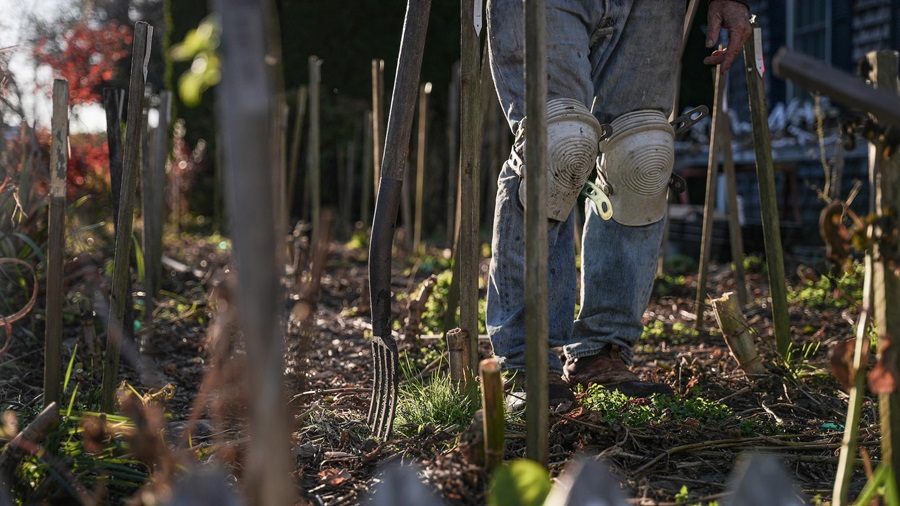
Now, Mayo and Ludwig, who married in 2015, tend the garden year-round. “Very few know the work that has to be done to get the flowers to show off as people see them in the summer,” Mayo says.
Around the end of September, Mayo cuts down the browning dahlia plants. He spares a few inches of each stem so he can label and cover them with tin foil to prevent rot. Then the tubers are pulled from the ground, rinsed, and placed in bins to be stored in the couple’s cellar. The work of preserving tubers is physical and repetitive. And there’s dirt everywhere. “Most people just let their tubers die,” says Mayo, “and then buy new ones from the store in the spring.”
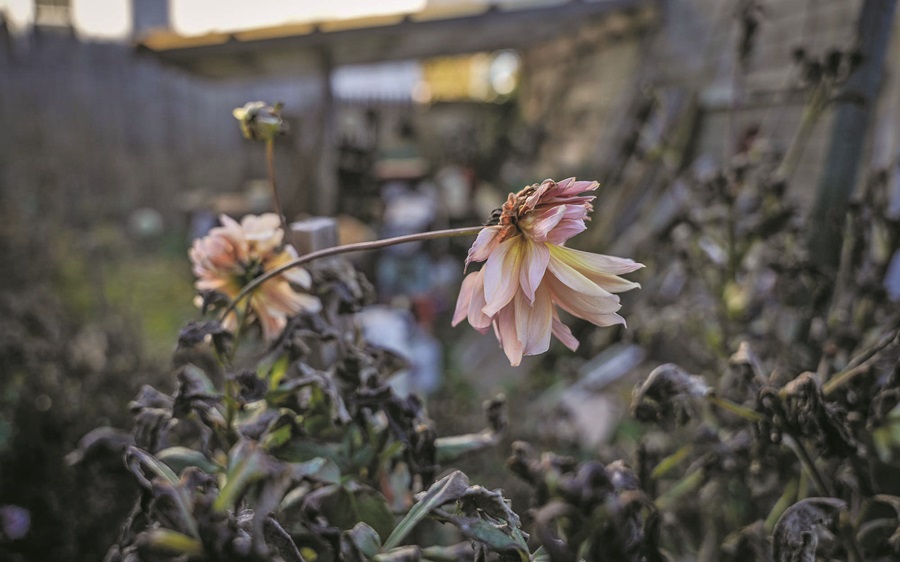
Ludwig and Mayo move around the garden with a sort of chaotic precision. Mayo, handling most of the cutting and extracting of the tubers, sets up a kind of assembly line from the spot where he pulls them from the ground to a makeshift table where he rinses them. Ludwig deals with the dirt, pulling back the summer weed block after Mayo removes the tubers to begin the process of layering cardboard and compost to feed the soil for next year.
“She’s very careful about a bunch of things that I’m not, like soil quality,” says Mayo. Come spring, Ludwig also manages an annual tuber giveaway, when about 1,000 plants are picked up by locals.
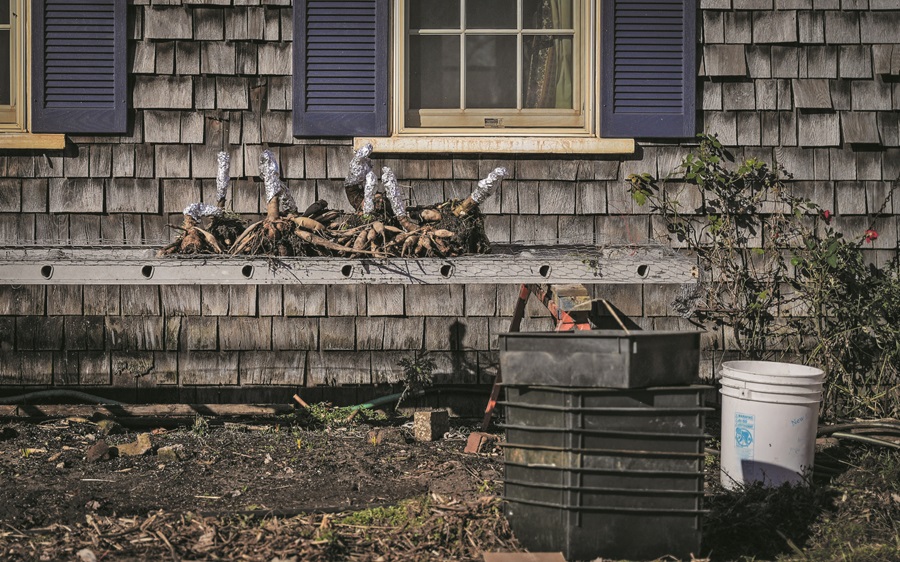
“Maybe you’ve seen our flowers around town,” says Ludwig. The garden is a counterpoint to Ludwig’s work at the CCS, where she recovers ghost gear and sorts beach trash as leader of the marine debris and plastics program.
Before cutting down the dying dahlia stems, Ludwig and Mayo pick off the seed pods, which Mayo plants under a grow light in the winter. In the summer, bees and wind carry pollen from one flower to another, fertilizing the pods and potentially creating new, yet-unknown varieties of flowers. Mayo and Ludwig find this part of the process exciting.
“You don’t know what you’re going to get,” he says. “It’s really fun to sort of say, wow, look at this pretty thing.”
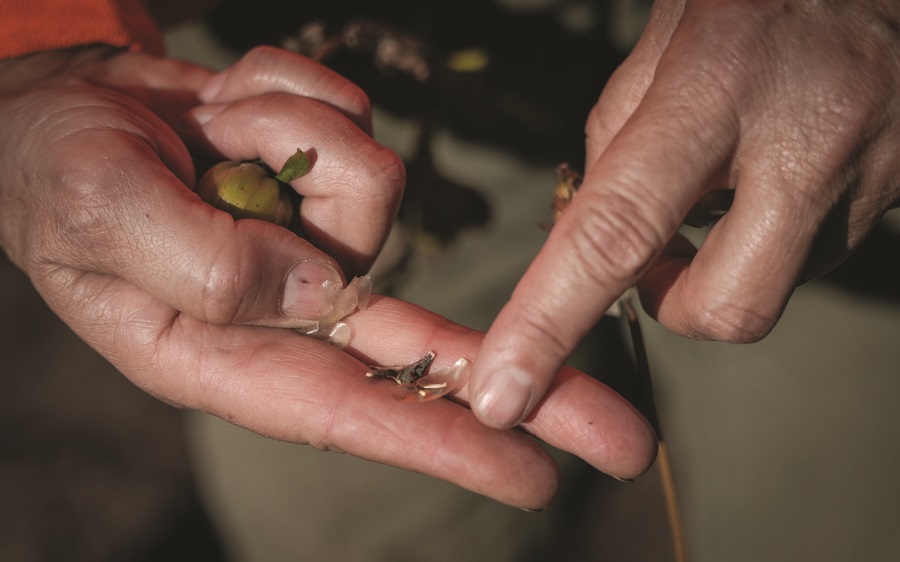
While dahlias grown from tubers will be identical from year to year, growing them from seeds is another matter. Dahlias are octoploids — that is, they have eight sets of chromosomes, “which means the genetic mix has so many potentials it’s hard to direct,” says Mayo, “though it’s not a free-for-all.” He and Ludwig have found that dahlias with more open-centered flowers, which are easily pollinated, tend to predominate. Mayo says he puts none of their seeds in his greenhouse, aiming to select for more complex petal formations, and, he says, “bigness is cool.”
Ludwig holds out a seedpod. “This is from ‘Picnic Lunch,’ ” she says as she breaks apart the pod. “Picnic Lunch,” named by Ludwig, is a one-of-a-kind dahlia cultivar that turned up from last summer’s seeds.
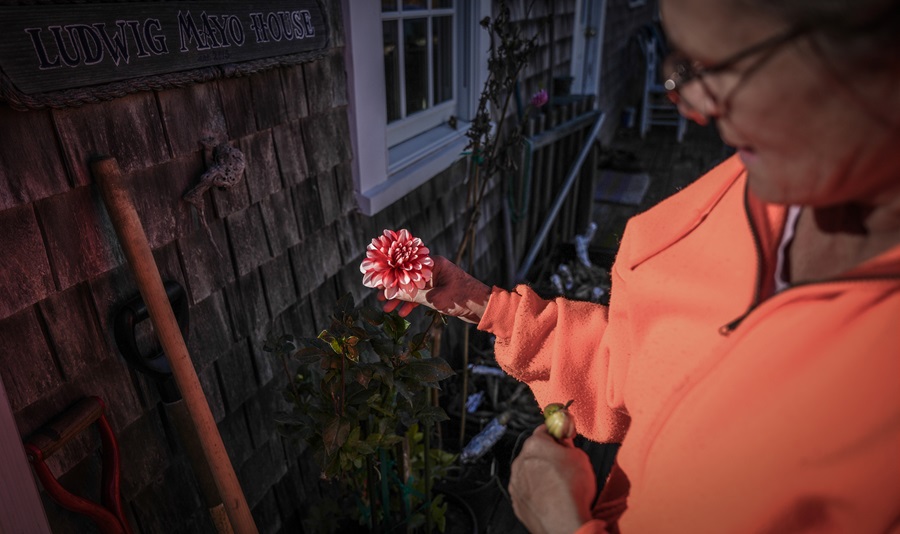
“Actually, don’t break that one,” Mayo says. He’s hoping to save the seeds to grow during the winter, even though he knows they won’t stay true. They’ll have to wait and see if its decorative petals prevail. “All gardening is ‘we’ll see,’ ” says Mayo. “Really all biology is ‘we’ll see.’ It’s like children,” he says. “I would argue that’s why we love our ecosystem.”
On a deck just behind the now harvested garden, a single dahlia flower stands proudly in a planter. It’s “Picnic Lunch,” and the only flower still showing life. “It just happened to bloom this week,” Ludwig says.
